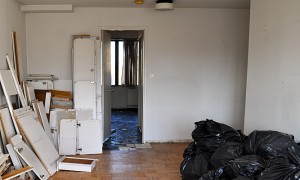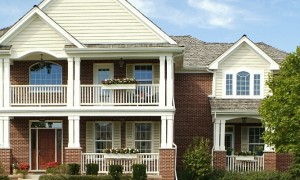Asbestos is not something you want to mess around with. If released into the air and inhaled by people, the small fibers can cause respiratory problems such as asbestosis and lung cancer. The material was commonly used in homes built before the late 1970s, including homes in the Philadelphia area. In many cases, you are better off leaving well enough alone. According to the Environmental Protection Agency, the material is usually not a problem if left undisturbed.
Locations
Asbestos is a type of fibrous mineral. You cannot see it with just your eyes, and there is no real way to spot the fibers in materials without a special microscope. One common use for the material is as insulation. The material has also been used in floor tiles made of linoleum and vinyl, the glue used to attach the tiles to the floor, roofing materials, drywall, window siding, and concrete siding. Materials containing the mineral were most commonly used in houses built between 1940 and the 1970s.
Cause for Concern
Asbestos can cause harm to people only if the material is released into the air. If you think the mineral fibers might be in the tiles, drywall, or insulation of your home, the best option is not to touch those items. For example, do not rip out the floor tiles or replace the drywall if you don’t have to. There is no way to know whether the material contains the fiber unless you have it tested, which is something only a professional should do. Philadelphia has rather strict rules when it comes to handling the material. A company must have certification before it can test for the fibers, and any samples that might contain the fibers need to be tested in a lab that has been certified by the city.
If it is discovered that your home contains the material, you should be extra careful around the area with asbestos. For example, do not drill holes in the wall if asbestos has been found there, and take immediate action if the area containing the fibers becomes damaged in any way.
Containing or Removing
If asbestos is a problem in your home, you should have the material either contained or removed entirely. Removing the fiber is not a do-it-yourself project. Hire a contractor who has been certified by Air Management Services, the division of Philadelphia government that is responsible for monitoring air quality. Anyone working under the contractor should be licensed by the state’s Department of Labor and Industry.
Once you hire a contractor, it is up to him to notify Air Management Services about the project. The contractor should also tell you how much material there is to remove and provide you with a firm price quote before starting work. At the end of the job, you should be able to safely return to your home, and the contractor should give you a certificate stating that it is safe to occupy the area. The contractor should also provide you with a copy of the air quality test results.
The Philadelphia Department of Public Health takes containment and removal very seriously. If you think your contractor did not do the job correctly or did not follow the right protocol, get in touch with the department. Your own health and the health of those around you depends on the correct handling and disposal of this dangerous material.
Image Source: Brian Dunaway
[cf]skyword_tracking_tag[/cf]






